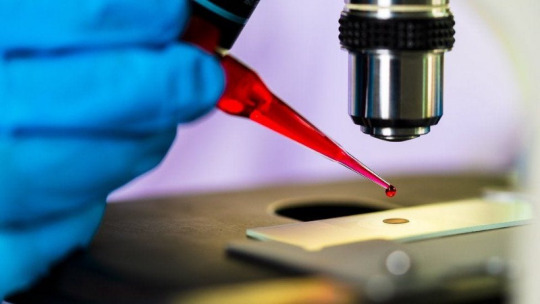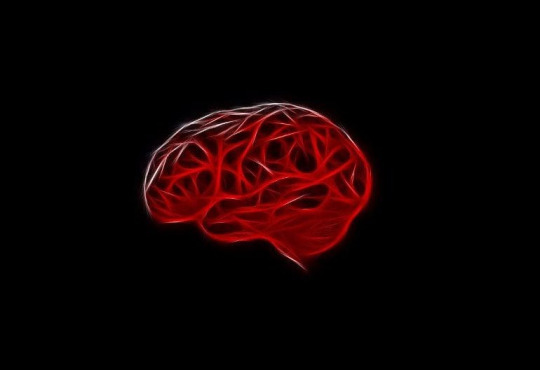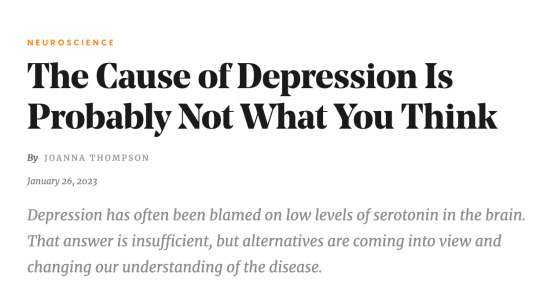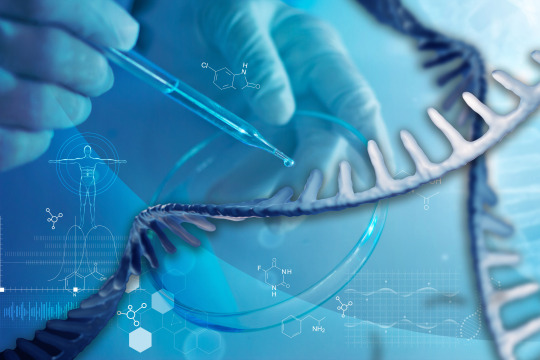#Covid 19 and cancer patients
Text
god. just. the fact that most health authorities and health care workers in general dont give a shit about covid anymore and dont bother to mask properly or at all anymore is just plain rage inducing. you can't even go to hospital now without putting yourself at massive risk of catching covid despite, yknow, a lot of medically vulnerable people being treated there. hospital acquired infections are usually treated as major events where the cause is investigated and practices changed so it doesnt happen again. but covid is apparently an 'acceptable' infection to get while being in hospital and said hospital and its staff take no responsibility for it. i fucking hate it here
#covid 19#the absolute Glee i heard from staff at my last placement when they found out masking had downgraded to just surgical instead of P2 masks#and how theyd constantly encourage patients to take their masks off if they were#'too uncomfortable'#made my blood boil#you know what else is 'uncomfortable'? getting infected with a virus that can infect + damage basically every single organ in ur body#and leave you with long lasting debilitating symptoms#and they were encouraging CANCER PATIENTS to take their fuckign masks off#i jsut#[screams eternally]#holy personal post batman
9 notes
·
View notes
Link
After COVID, it is necessary to exercise to keep the lungs healthy. Moreover, you have to take care of some things. To keep the lungs strong, drink plenty of fluids daily and 5 minutes of steam every day. And most importantly, do not make any changes in your lifestyle without the advice of a doctor. In conclusion, you can contact Dr. Virendra Singh at Asthma Bhawan. He has been treating many patients with lung problems for a long time.
#covdi-19#covid-19 treatment#covid vaccine#covid-19 third wave#covid news#Covid-19 XE variant#long covid#covid pandemic#COVID-19#Covid-19 XE Variant Symptoms#COVID-19 XE Variant Symptoms and Precautions#How does COVID-19 XE Variant outbreak affect Asthma Patients?#covid_19#asthma#asthma treatment#Asthma Patients#lung cancer#interstitial lung disease#Best Pulmonologist in Jaipur | Lung Specialist and Chest Doctor in Rajasthan India#How to Keep Your Lungs Healthy During Covid-19 XE Variants#Dr. Virendra Singh#Lungs Healthy During Covid-19
0 notes
Text
Applying Real World Data
Applying Real World Data
This week I am talking to Laura Fernandes, PhD, Senior Statistical Director COTA (@cotahealthcare) who provide real-world data and analytics to help health systems expedite cancer research and standardize cancer patient care, and empowers life sciences companies to accelerate drug development and regulatory approvals for life-saving cancer drugs and treatments.
Laura comes from an international…

View On WordPress
#Cancer#Children#clinical trials#COVID-19#COVID19#Data#Disruptive#Drug#EHR#EMR#FDA#Incremental#Incremental Healthcare#IncrementalHealth#observational data#oncology#Pandemic#patients#precision medicine#questions#randomized clinical trial#real world data#Research#Safety#studied#TheIncrementalist#therapy#treatments#trials
0 notes
Text
At least one in five people who have had COVID-19 will develop what is known as “long COVID,” characterized by signs, symptoms, and conditions that continue or well after a COVID-19 infection. According to officials, Detroit has the second highest rate of long COVID in the nation, with over 25% of adults who had COVID-19 reporting long-term symptoms.
In response, a new no-cost mobile health unit is working to provide metro Detroiters with screening for the condition, intending to gather research on long COVID’s effects and bridge the gap to healthcare access in marginalized communities.
On Friday, March 15, declared Long COVID Awareness Day, Michigan Speaker of the House Joe Tate, Michigan Rep. Tyrone Carter, health experts, and community members gathered for an event highlighting the first-of-its-kind CT chest screening program.
The unit was created about a year ago through a partnership between Moderna, Team Wellness Center, People.Health, and other local community organizations.
“Some of our locations service some of the most vulnerable communities in the whole state,” Dani Hourani, Director of Team Wellness Center, said. “It’s very important for us that we are able to bring them resources that they otherwise would not have.”
So far, the screenings have not only helped the impact of long COVID but also been able to detect non-COVID-related illnesses including cancer. Plus, the team has connected patients with further care and testing when needed.
“Whether you’re in Detroit or rural areas, bringing healthcare access directly to the community and partnering with organizations that have that trust with community members is critical,” Tate said at the Friday event. “We still have more work to do to make sure that we lessen the impact of COVID on this community.”
Anyone over 18 who has had COVID-19 and is still experiencing difficulty breathing or other symptoms is encouraged to get scanned. People can fill out a form at People.Health to schedule an appointment.
99 notes
·
View notes
Text
The Best News of Last Week #049
1. First 100,000 KG Removed From the Great Pacific Garbage Patch

The Ocean Cleanup has been working on ridding the world of the GPGP since 2013. Its founder and CEO, Boyan Slat, said the company’s current cleanup platform, System 002, had collected 101,353kg of plastic since being deployed in August 2021. The cleanups swept a 3,000 square kilometer area of the Pacific, roughly equivalent to the size of Rhode Island or Luxembourg.
2. There are 40% more tigers in the world than previously estimated

It’s the Year of the Tiger, and a new population assessment offers some hope for the endangered species.
An estimated 3,726 to 5,578 tigers currently live in the wild worldwide — up 40% from 2015, according to a new tiger assessment from the International Union for Conservation of Nature (IUCN). Tigers are still considered endangered and remain on the IUCN’s Red List, which assesses endangered species.
3. Fourth patient seemingly cured of HIV

A man who has lived with HIV since the 1980s seems to have been cured in only the fourth such case, say doctors. He was given a bone marrow transplant to treat blood cancer leukaemia from a donor who was naturally resistant to the virus.
The 66-year-old, has stopped taking HIV medication. He said he was “beyond grateful” the virus could no longer be found in his body. The man is known as the “City of Hope” patient after the hospital where he was treated in Duarte, California.
4. Pennsylvania nurses receiving student debt cancellation

Nurses across Pennsylvania will begin receiving notifications next week about whether they are eligible for a share of the $55 million the state is making available to lower or erase their student loan debt.
The money for Pa. Student Loan Relief for Nurses Program comes out of state’s share of federal American Rescue Plan funds. This one-time offer will relieve selected state-licensed nurses who cared for patients during the COVID-19 pandemic at a Pennsylvania health care facility of up to $7,500 of student loan debt.
5. This beautiful blue parrot has returned to the wild 2 years after being declared extinct

After teetering on the edge of extinction, the beautiful Spix’s macaw has made its return to the wild, over two decades after the last bird was seen in nature. Eight of the bright blue parrots have been released into a protected nature reserve in Brazil.
“They’re doing absolutely wonderful. So far there is 100 per cent survival. The birds are all staying together as a group… They’re staying in around the release area. And they’re also beginning to forage on natural occurring foods,” biologist Tom White told The Current guest host Duncan McCue.
6. New research shows that signs of Alzheimer’s can be found in blood 17 years before symptoms begin.

A newly developed immuno-infrared sensor allowed researchers to discover biomarkers for Alzheimer’s disease in blood samples 17 years before clinical symptoms appeared.
The goal is to determine the risk of developing Alzheimer’s dementia at a later stage with a simple blood test even before the toxic plaques can form in the brain, in order to ensure that a therapy can be initiated in time.
7. Drone lifeguard saves boy, 14, from drowning in sea in Valencia in Spain
youtube
A pioneering drone lifeguard has saved a 14-year-old boy from drowning in the sea in Valencia in Spain.
The drone lifeguard service, which has been rolled out across Spanish beaches, dropped a life vest into the sea this month that was able to keep the teenager afloat just as he started to sink, its operators have said. The vest kept the boy afloat until a physical lifeguard team arrived moments later.
...
That’s it for this week. This newsletter will always be free. If you liked this post you can support me with a small kofi donation:
Buy me a coffee ❤️
573 notes
·
View notes
Text

The Cause of Depression Is Probably Not What You Think (Joanna Thompson, Quanta Magazine, Jan 26 2023)
"A literature review that appeared in Molecular Psychiatry in July was the latest and perhaps loudest death knell for the serotonin hypothesis, at least in its simplest form.
An international team of scientists led by Joanna Moncrieff of University College London screened 361 papers from six areas of research and carefully evaluated 17 of them.
They found no convincing evidence that lower levels of serotonin caused or were even associated with depression.
People with depression didn’t reliably seem to have less serotonin activity than people without the disorder.
Experiments in which researchers artificially lowered the serotonin levels of volunteers didn’t consistently cause depression. (…)
Although serotonin levels don’t seem to be the primary driver of depression, SSRIs show a modest improvement over placebos in clinical trials.
But the mechanism behind that improvement remains elusive.
“Just because aspirin relieves a headache, [it] doesn’t mean that aspirin deficits in the body are causing headaches,” said John Krystal, a neuropharmacologist and chair of the psychiatry department at Yale University.
“Fully understanding how SSRIs produce clinical change is still a work in progress.”
Speculation about the source of that benefit has spawned alternative theories about the origins of depression. (…)
Repple warns, however, that another explanation for the effects his team observed is also possible: Perhaps the depressed patients’ brain connections were impaired by inflammation.
Chronic inflammation impedes the body’s ability to heal, and in neural tissue it can gradually degrade synaptic connections.
The loss of such connections is thought to contribute to mood disorders.
Good evidence supports this theory.
When psychiatrists have evaluated populations of patients who have chronic inflammatory diseases like lupus and rheumatoid arthritis, they’ve found that “all of them have higher-than-average rates of depression,” said Charles Nemeroff, a neuropsychiatrist at the University of Texas, Austin.
Of course, knowing that they have an incurable, degenerative condition may contribute to a patient’s depressed feelings, but the researchers suspect that the inflammation itself is also a factor.
Medical researchers have found that inducing inflammation in certain patients can trigger depression.
Interferon alpha, which is sometimes used to treat chronic hepatitis C and other conditions, causes a major inflammatory response throughout the body by flooding the immune system with proteins known as cytokines — molecules that facilitate reactions ranging from mild swelling to septic shock.
The sudden influx of inflammatory cytokines leads to appetite loss, fatigue and a slowdown in mental and physical activity — all symptoms of major depression.
Patients taking interferon often report feeling suddenly, sometimes severely, depressed.
If overlooked chronic inflammation is causing many people’s depression, researchers still need to determine the source of that inflammation.
Autoimmune disorders, bacterial infections, high stress and certain viruses, including the virus that causes Covid-19, can all induce persistent inflammatory responses.
Viral inflammation can extend directly to tissues in the brain. Devising an effective anti-inflammatory treatment for depression may depend on knowing which of these causes is at work.
It’s also unclear whether simply treating inflammation could be enough to alleviate depression.
Clinicians are still trying to parse whether depression causes inflammation or inflammation leads to depression. “It’s a sort of chicken-and-egg phenomenon,” Nemeroff said.
Increasingly, some scientists are pushing to reframe “depression” as an umbrella term for a suite of related conditions, much as oncologists now think of “cancer” as referring to a legion of distinct but similar malignancies.
"And just as each cancer needs to be prevented or treated in ways relevant to its origin, treatments for depression may need to be tailored to the individual."
82 notes
·
View notes
Text

Meet the unsung contributor to revolutionary breakthroughs in treating polio, cancer, HPV, and even COVID-19: Henrietta Lacks. Born in 1920 Roanoke, Virginia, Henrietta's mother Eliza died when she was only four, and she was ultimately raised by her maternal grandfather in Clover, Virginia. Henrietta worked as a tobacco farmer and attended a segregated school until the age of 14, when she gave birth to a son, Lawrence. A daughter, Elsie, was born three years later --to compound the family's difficulties, Elsie had cerebral palsy and epilepsy. Henrietta and her now-husband David Lacks moved to Turner Station (now Dundalk), Maryland where David had landed a job with a nearby steel plant. At the time Turner Station was one of the oldest African-American communities in Baltimore County and there was sufficient community support for the family to buy a house and produce three more children.
In 1951 at the age of 31, Henrietta died at Johns Hopkins Hospital of cervical cancer, mere months after the birth of the family's youngest son. But before her death --and without her or her family's consent-- during a biopsy two tumour cell samples were taken from Henrietta's cervix and sent to Johns Hopkins researchers. Hernietta's cells carried a unique trait: an ability to rapidly multiply, producing a new generation every 24 hours; a breakthrough that no other human cell had achieved. Prior to this discovery, only cells that had been transformed by viruses or genetic mutations carried such a characteristic. With the prospect of now being able to work with what amounted to the first-ever naturally-occurring immortal human cells, researchers created a patent on the HeLa cell line but hid the donor's true identity under a fake name: Helen Lane.
It is no exaggeration to state that in the 70 years since her death, Henrietta's cells have been bought, sold, packaged, and shipped by thousands of laboratories; with her cells being used as a baseline in as many as 74,000 different studies (including some Nobel Prize winners). Her cells have even been sent into space to study the effects of microgravity, and were instrumental in the Human Genome Project. While no actual law (or even a code of ethics) necessarily required doctors to ask permission before taking tissue from a terminal patient, there was a very clear Maryland state law on the books that forbade tissue removal from the dead without permission, throwing the situation into something of a legal grey area. However because Henrietta was poor, minimally educated, and Black, this standard was quietly (and easily) circumvented and she was never recognized for her monumental contributions to science and medicine ...and her family was never compensated. The family remained unaware of Henrietta's contribution until 1975, when the HeLa line's provenance finally became public. Henrietta had been buried in an unmarked grave in the family cemetery in Clover, Virginia but in 2010 a new headstone was donated and dedicated, acknowledging her phenomenal contribution. That same year the John Hopkins Institute for Clinical and Translational Research established a new Henrietta Lacks Memorial lecture series. A statue of Lacks was commissioned in 2022, to be erected in Lacks's birthplace of Roanoke, Virginia --pointedly replacing a previous statue of Confederate Gen. Robert E. Lee, which had been removed following nationwide protests over the murder of George Floyd.
Dive into The Immortal Life of Henrietta Lacks by Rebecca Skloot, originally published in 2011 and subsequently adapted into an HBO movie in 2017, starring Oprah Winfrey as Henrietta's daughter Deborah and Renee Elise Goldberry as Henrietta. (And yes, this book has been challenged and banned in more than one school district.)
#black lives matter#henrietta lacks#johns hopkins#cell biology#hela#stem cell#translational research#genomics#teachtruth#dothework
59 notes
·
View notes
Text
COVID-19 Vaccines Can Potentially Worsen Cancer: Review
COVID-19 Vaccines Can Potentially Worsen Cancer: Review https://link.theepochtimes.com/mkt_app/health/covid-19-vaccines-can-potentially-worsen-cancer-review-5552341?utm_source=andshare
It's all about reducing the population of humans
35 notes
·
View notes
Text
Great article once again from FLCCC detailing how Ivermectin and other repurposed drugs may indeed cure certain types of cancers and a first of kind official study has begun.
“Patient Zero” is Paul Mann who had an staggering stage 4 cancer and had received ALL traditional cancer treatments to his own detriment. Was actually on hospice when he began his journey with ivermectin. Now he dances three times a week.
Just a great article that will never be discussed by the media.
Save and pass along.
About the FLCCC Alliance:
The FLCCC Alliance was organized in March 2020 by a group of highly published, world renowned critical care physicians and scholars with the academic support of allied physicians from around the world. FLCCC’s goal is to research and develop lifesaving protocols for the prevention and treatment of COVID-19 in all stages of illness including the I-RECOVER protocols for “Long COVID” and Post Vaccine Syndrome. For more information: www.FLCCC.net
18 notes
·
View notes
Text
"Researchers from the University of Liverpool and the University of Edinburgh have found evidence to say that people with cancer face a higher risk of mortality from COVID-19 compared with those without cancer."
#cancer#mask up#covid#covid 19#covid isn't over#pandemic#covid conscious#long covid#covid is airborne#wear a mask#coronavirus
9 notes
·
View notes
Text
Abstract
Severe acute respiratory syndrome coronavirus 2 (SARS-CoV-2) and COVID-19 infection has led to worsened outcomes for patients with cancer. SARS-CoV-2 spike protein mediates host cell infection and cell-cell fusion that causes stabilization of tumor suppressor p53 protein. In-silico analysis previously suggested that SARS-CoV-2 spike interacts with p53 directly but this putative interaction has not been demonstrated in cells. We examined the interaction between SARS-CoV-2 spike, p53 and MDM2 (E3 ligase, which mediates p53 degradation) in cancer cells using an immunoprecipitation assay. We observed that SARS-CoV-2 spike protein interrupts p53-MDM2 protein interaction but did not detect SARS-CoV-2 spike bound with p53 protein in the cancer cells. We further observed that SARS-CoV-2 spike suppresses p53 transcriptional activity in cancer cells including after nutlin exposure of wild-type p53-, spike S2-expressing tumor cells and inhibits chemotherapy-induced p53 gene activation of p21(WAF1), TRAIL Death Receptor DR5 and MDM2. The suppressive effect of SARS-CoV-2 spike on p53-dependent gene activation provides a potential molecular mechanism by which SARS-CoV-2 infection may impact tumorigenesis, tumor progression and chemotherapy sensitivity. In fact, cisplatin-treated tumor cells expressing spike S2 were found to have increased cell viability as compared to control cells. Further observations on gamma-H2AX expression in spike S2-expressing cells treated with cisplatin may indicate altered DNA damage sensing in the DNA damage response pathway. The preliminary observations reported here warrant further studies to unravel the impact of SARS-CoV-2 and its various encoded proteins including spike on pathways of tumorigenesis and response to cancer therapeutics.
8 notes
·
View notes
Text
Unlocking mRNA’s cancer-fighting potential
New Post has been published on https://thedigitalinsider.com/unlocking-mrnas-cancer-fighting-potential/
Unlocking mRNA’s cancer-fighting potential


What if training your immune system to attack cancer cells was as easy as training it to fight Covid-19? Many people believe the technology behind some Covid-19 vaccines, messenger RNA, holds great promise for stimulating immune responses to cancer.
But using messenger RNA, or mRNA, to get the immune system to mount a prolonged and aggressive attack on cancer cells — while leaving healthy cells alone — has been a major challenge.
The MIT spinout Strand Therapeutics is attempting to solve that problem with an advanced class of mRNA molecules that are designed to sense what type of cells they encounter in the body and to express therapeutic proteins only once they have entered diseased cells.
“It’s about finding ways to deal with the signal-to-noise ratio, the signal being expression in the target tissue and the noise being expression in the nontarget tissue,” Strand CEO Jacob Becraft PhD ’19 explains. “Our technology amplifies the signal to express more proteins for longer while at the same time effectively eliminating the mRNA’s off-target expression.”
Strand is set to begin its first clinical trial in April, which is testing a proprietary, self-replicating mRNA molecule’s ability to express immune signals directly from a tumor, eliciting the immune system to attack and kill the tumor cells directly. It’s also being tested as a possible improvement for existing treatments to a number of solid tumors.
As they work to commercialize its early innovations, Strand’s team is continuing to add capabilities to what it calls its “programmable medicines,” improving mRNA molecules’ ability to sense their environment and generate potent, targeted responses where they’re needed most.
“Self-replicating mRNA was the first thing that we pioneered when we were at MIT and in the first couple years at Strand,” Becraft says. “Now we’ve also moved into approaches like circular mRNAs, which allow each molecule of mRNA to express more of a protein for longer, potentially for weeks at a time. And the bigger our cell-type specific datasets become, the better we are at differentiating cell types, which makes these molecules so targeted we can have a higher level of safety at higher doses and create stronger treatments.”
Making mRNA smarter
Becraft got his first taste of MIT as an undergraduate at the University of Illinois when he secured a summer internship in the lab of MIT Institute Professor Bob Langer.
“That’s where I learned how lab research could be translated into spinout companies,” Becraft recalls.
The experience left enough of an impression on Becraft that he returned to MIT the next fall to earn his PhD, where he worked in the Synthetic Biology Center under professor of bioengineering and electrical engineering and computer science Ron Weiss. During that time, he collaborated with postdoc Tasuku Kitada to create genetic “switches” that could control protein expression in cells.
Becraft and Kitada realized their research could be the foundation of a company around 2017 and started spending time in the Martin Trust Center for MIT Entrepreneurship. They also received support from MIT Sandbox and eventually worked with the Technology Licensing Office to establish Strand’s early intellectual property.
“We started by asking, where is the highest unmet need that also allows us to prove out the thesis of this technology? And where will this approach have therapeutic relevance that is a quantum leap forward from what anyone else is doing?” Becraft says. “The first place we looked was oncology.”
People have been working on cancer immunotherapy, which turns a patient’s immune system against cancer cells, for decades. Scientists in the field have developed drugs that produce some remarkable results in patients with aggressive, late-stage cancers. But most next-generation cancer immunotherapies are based on recombinant (lab-made) proteins that are difficult to deliver to specific targets in the body and don’t remain active for long enough to consistently create a durable response.
More recently, companies like Moderna, whose founders also include MIT alumni, have pioneered the use of mRNAs to create proteins in cells. But to date, those mRNA molecules have not been able to change behavior based on the type of cells they enter, and don’t last for very long in the body.
“If you’re trying to engage the immune system with a tumor cell, the mRNA needs to be expressing from the tumor cell itself, and it needs to be expressing over a long period of time,” Becraft says. “Those challenges are hard to overcome with the first generation of mRNA technologies.”
Strand has developed what it calls the world’s first mRNA programming language that allows the company to specify the tissues its mRNAs express proteins in.
“We built a database that says, ‘Here are all of the different cells that the mRNA could be delivered to, and here are all of their microRNA signatures,’ and then we use computational tools and machine learning to differentiate the cells,” Becraft explains. “For instance, I need to make sure that the messenger RNA turns off when it’s in the liver cell, and I need to make sure that it turns on when it’s in a tumor cell or a T-cell.”
Strand also uses techniques like mRNA self-replication to create more durable protein expression and immune responses.
“The first versions of mRNA therapeutics, like the Covid-19 vaccines, just recapitulate how our body’s natural mRNAs work,” Becraft explains. “Natural mRNAs last for a few days, maybe less, and they express a single protein. They have no context-dependent actions. That means wherever the mRNA is delivered, it’s only going to express a molecule for a short period of time. That’s perfect for a vaccine, but it’s much more limiting when you want to create a protein that’s actually engaging in a biological process, like activating an immune response against a tumor that could take many days or weeks.”
Technology with broad potential
Strand’s first clinical trial is targeting solid tumors like melanoma and triple-negative breast cancer. The company is also actively developing mRNA therapies that could be used to treat blood cancers.
“We’ll be expanding into new areas as we continue to de-risk the translation of the science and create new technologies,” Becraft says.
Strand plans to partner with large pharmaceutical companies as well as investors to continue developing drugs. Further down the line, the founders believe future versions of its mRNA therapies could be used to treat a broad range of diseases.
“Our thesis is: amplified expression in specific, programmed target cells for long periods of time,” Becraft says. “That approach can be utilized for [immunotherapies like] CAR T-cell therapy, both in oncology and autoimmune conditions. There are also many diseases that require cell-type specific delivery and expression of proteins in treatment, everything from kidney disease to types of liver disease. We can envision our technology being used for all of that.”
#Alumni/ae#approach#Behavior#bioengineering#Bioengineering and biotechnology#Biological engineering#Biology#blood#breast cancer#Cancer#cancer cells#cell#cell therapy#cell types#Cells#CEO#challenge#change#Companies#computer#Computer Science#covid#Database#datasets#deal#Disease#Diseases#drug development#drugs#easy
7 notes
·
View notes